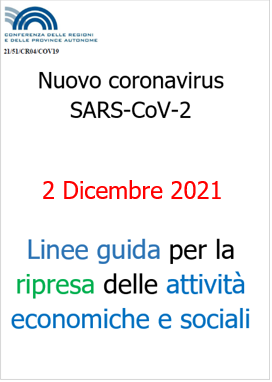Convenzione ILO C42 del 04 giugno 1934
ID 14075 | 19.07.2021
Convenzione ILO C42 Risarcimento delle malattie professionali (riveduta), 1934.
Ginevra, 04 giugno 1934
The General Conference of the International Labour Organisation, having been convened at Geneva by the Governing Body of the International Labour Office, and having met in its Eighteenth Session on 4 June 1934, and having decided upon the adoption of certain proposals with regard to the partial revision of the Convention concerning workmen's compensation for occupational diseases adopted by the Conference at its Seventh Session, which is the fifth item on the agenda of the Session, and considering that these proposals must take the form of an international Convention, adopts this twenty-first day of June of the year one thousand nine hundred and thirty-four the following Convention, which may be cited as the Workmen's Compensation (Occupational Diseases) Convention (Revised), 1934.
Article 1
1. Each Member of the International Labour Organisation which ratifies this Convention undertakes to provide that compensation shall be payable to workmen incapacitated by occupational diseases, or, in case of death from such diseases, to their dependants, in accordance with the general principles of the national legislation relating to compensation for industrial accidents.
2. The rates of such compensation shall be not less than those prescribed by the national legislation for injury resulting from industrial accidents. Subject to this provision, each Member, in determining in its national law or regulations the conditions under which compensation for the said diseases shall be payable, and in applying to the said diseases its legislation in regard to compensation for industrial accidents, may make such modifications and adaptations as it thinks expedient.
Article 2
Each Member of the International Labour Organisation which ratifies this Convention undertakes to consider as occupational diseases those diseases and poisonings produced by the substances set forth in the Schedule appended hereto, when such diseases or such poisonings affect workers engaged in the trades, industries or processes placed opposite in the said Schedule, and result from occupation in an undertaking covered by the said national legislation.
|
List of diseases and toxic substances
|
List of corresponding trades, industries and processes
|
|
Poisoning by lead, its alloys or compounds and their sequelae.
|
Handling of ore containing lead, including fine shot in zinc factories.
Casting of old zinc and lead in ingots.
Manufacture of articles made of cast lead or of lead alloys.
Employment in the polygraphic industries.
Manufacture of lead compounds.
Manufacture and repair of electric accumulators.
Preparation and use of enamels containing lead.
Polishing by means of lead files or putty powder with a lead content.
All painting operations involving the preparation and manipulation of coating substances, cements or colouring substances containing lead pigments.
|
|
Poisoning by mercury, its amalgams and compounds and their sequelae.
|
Handling of mercury ore.
Manufacture of mercury compounds.
Manufacture of measuring and laboratory apparatus.
Preparation of raw material for the hatmaking industry.
Hot gilding.
Use of mercury pumps in the manufacture of incandescent lamps.
Manufacture of fulminate of mercury primers.
|
|
Anthrax infection.
|
Work in connection with animals infected with anthrax.
Handling of animals carcasses or parts of such carcasses including hides, hoofs and horns.
Loading and unloading or transport of merchandise.
|
|
Silicosis with or without pulmonary tuberculosis, provided that silicosis is an essential factor in causing the resultant incapacity or death.
|
Industries or processes recognised by national law or regulations as involving exposure to the risk of silicosis.
|
|
Phosphorous poisoning by phosphorous or its compounds, and its sequelae.
|
Any process involving the production, liberation or utilisation of phosphorous or its compounds.
|
|
Arsenic poisoning by arsenic or its compounds, and its sequelae.
|
Any process involving the production, liberation or utilisation of arsenic or its compounds.
|
|
Poisoning by benzene or its homologues, their nitro- and amido-derivatives, and its sequelae.
|
Any process involving the production, liberation or utilisation of bezene or its homologues, or their nitro- or amido-derivatives.
|
|
Poisoning by the halogen derivatives of hydrocarbons of the aliphatic series.
|
Any process involving the production, liberation or utilisation of halogen derivatives of hydrocarbons of the aliphatic series designated by nationals laws or regulations.
|
|
Pathological manifestations due to:
a) radium and other radioactive substances;
b) X-rays.
|
Any process involving exposure to the action of radium, radioactive substances, or X-rays.
|
|
Primary epitheliomatous cancer of the skin.
|
Any process involving the handling or use of tar, pitch, bitumen, mineral oil, paraffin, or the compounds, products or residues of these substances.
|
Article 3
The formal ratifications of this Convention shall be communicated to the Director-General of the International Labour Office for Registration.
Article 4
1. This Convention shall be binding only upon those Members of the International Labour Organisation whose ratifications have been registered with the Director-General.
2. It shall come into force twelve months after the date on which the ratifications of two Members have been registered with the Director-General.
3. Thereafter, this Convention shall come into force for any Member twelve months after the date on which its ratification has been registered.
Article 5
As soon as the ratifications of two Members of the International Labour Organisation have been registered with the International Labour Office, the Director-General of the International Labour Office shall so notify all the Members of the International Labour Organisation. He shall likewise notify them of the registration of ratifications which may be communicated subsequently by other Members of the Organisation.
Article 6
1. A Member which has ratified this Convention may denounce it after the expiration of five years from the date on which the Convention first comes into force, by an act communicated to the Director-General of the International Labour Office for registration. Such denunciation shall not take effect until one year after the date on which it is registered with the International Labour Office.
2. Each Member which has ratified this Convention and which does not, within the year following the expiration of the period of five years mentioned in the preceding paragraph, consider the right of denunciation provided for in this Article, will be bound for another period of five years and, thereafter, may denounce this Convention at the expiration of each period of five years under the terms provided for in this Article.
Article 7
At such times as it may consider necessary the Governing Body of the International Labour Office shall present to the General Conference a report on the working of this Convention and shall examine the desirability of placing on the agenda of the Conference the question of its revision in whole or in part.
Article 8
1. Should the Conference adopt a new Convention revising this Convention in whole or in part, then unless the new Convention otherwise provides,
(a) the ratification by a Member of the new revising Convention shall ipso jure involve the immediate denunciation of this Convention, notwithstanding the provisions of Article 6 above, if and when the new revising Convention shall have come into force;
(b) as from the date when the new revising Convention comes into force, this Convention shall cease to be open to ratification by the Members.
2. This Convention shall in any case remain in force in its actual form and content for those Members which have ratified it but have not ratified the revising Convention.
Article 9
The French and English texts of this Convention shall both be authentic.
________
Versione non ufficiale
Fonte e Ratifica: Legge 02 Agosto 1952, n. 1305
Entrata in vigore: 17 giugno 1936
Allegati
|
Descrizione |
Lingua |
Dimensioni |
Downloads |
 |
Abbonati Sicurezza Lavoro
|
EN |
93 kB |
0 |

































